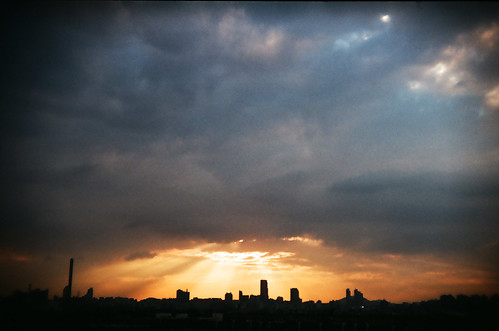Cloaked in the mantle of former Prime Minister Yukio Hatoyama’s elevated yu-ai, or fraternity, rhetoric, Japan has poured sugar on its regional relationships, especially with China. But what concretely has Japan done to demonstrate its commitment to rapprochement with its neighbours?
Not much. Aside from bolstered dialogues, envoys and high-level cabinet exchanges to South Korea and China, the DPJ hasn’t really shown a radically different diplomatic tack.
The real story here is what the Japanese government under the DPJ hasn’t done – namely, incense its neighbours with acts of historical contempt. So far, and to Hatoyama’s credit, there has been no Toshio Tamogami moment. No Yasukuni hullabaloo. No gaffes and guffaws.
To the contrary, history has been addressed candidly in the intervening months since the DPJ’s ascension.
Perhaps most sensational are whispers of a historic exchange of contrition between Japan and China: the Japanese prime minister to Nanjing and Chinese President Hu Jintao to Hiroshima. If carried out this would mark a watershed moment in high-level contrition. Set against the perennial historical rows that have beset bilateral ties for decades—textbook protests, Yasukuni shrine visitations, and so forth—this exchange is mind-blowing in scale.
Indeed, the DPJ has shown an impressive commitment to rein in the historical contretemps that have long roiled ties with Japan’s neighbours, and in so doing has opened the door for unprecedented progress. It is perhaps too early to tell if this trend will continue uninterrupted, but Hatoyama did his part to set expectations for his government and court goodwill.
Hatoyama first articulated this initiative in his address before the UN this past northern autumn: ‘Given the historical circumstances arising from its mistaken actions in the past, Japan has hesitated to play a proactive role in this region. It is my hope that the new Japan can overcome this history and become a ‘bridge’ among the countries of Asia.’
Notably, Hatoyama reaffirmed his commitment to the Murayama Statement, a landmark apology offered by former prime minister Tomiichi Murayama in 1995, made on the 50th anniversary of Japan’s surrender. He also made it clear that he would avoid visiting the controversial Yasukuni Shrine. The coalition government has even been playing around with the idea of a secular alternative site to Yasukuni that would surely do much to shore up support and goodwill from those frustrated with Yasukuni and the formal visitations.
Whether or not this desire to mend ties reflects a calculated, long-term strategic realignment in East Asia remains to be seen. It could very well spring from a more viscerally driven desire to return to a normal status quo between Japan and its neighbours.
Some analysts have interpreted this new diplomacy as a repudiation of the LDP’s failed China containment strategy, one which was founded on a series of strategic hedges in the Asia-Pacific that sought to box in China’s influence and growth. No longer, say many in the DPJ, party kingpin Ichiro Ozawa foremost among them. ‘In the view of DPJ policy advisers,’ writes Sneider, ‘this pseudo-containment strategy is doomed to failure.’
It isn’t exactly clear where this priority was born. Some point to Ozawa, who has long cultivated ties between China and the DPJ, and demonstrated an interest in mending Sino-Japanese ties since well before he defected to the DPJ. His mission to China this year with 143 DPJ lawmakers in tow certainly underscores this point.
Foreign Minister Katsuya Okada also seems to be at the crest of the wave of New Asianism, and has done his part to cultivate closer ties and move beyond the corrosive historical rows of the past. During a recent visit to South Korea, he offered a frank and unequivocal apology for Japan’s past actions. He also backed the creation of a joint history textbook by China, Japan and South Korea.
The real question is whether or not the Japanese defence establishment is on board. They are likely the greatest source of opposition and will doubtless raise legitimate concerns about the long- term security implications of these policies. It’s no accident that Toshio Tamogami came from the military establishment in Japan, where revisionist thinkers are in no short supply.

















Recent comments